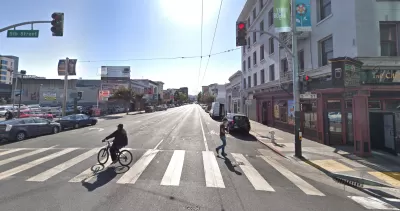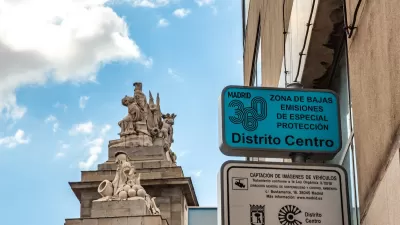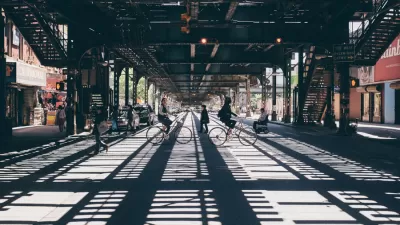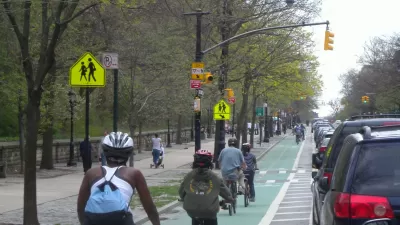A happy accident, Madrid may have stumbled onto a bike infrastructure program with great results. Only time will tell if "slow" lanes yield long-term positive results.

"What would you do if your city built a comprehensive network of generous mobility lanes that were open only to bikes and scooters — but put them in the middle of the roadway, surrounded by fast-moving car traffic on both sides?" asks Kea Wilson.
In Madrid, vehicular cycling infrastructure is doing just that. Rather than constructing protected bike lanes or painting the streets with new thoroughfares for non-motor vehicles, Madrid implemented "slow" lanes, reducing the once higher-speed lanes of traffic to a more mild 30 kilometers (about 19 miles) per hour to promote biking and alternative modes of transportation.
Counterintuitively, making space for riders in the middle lanes of vehicular traffic could make them even safer when cycling. We need more data to understand whether the Madrid approach works, says Wilson.
Madrid saw an increase in bikers, writes Wilson:
The new lanes were paired with enforcement for drivers who broke the 30 KmPH speed limit in those lanes, as well as a new e-bike share program to encourage would-be riders to conquer the hilly city on two wheels. in time, the city did experience a gradual increase in the share of bikes on the road, peaking at 6 percent by 2018. (By contrast, fewer than 1 percent of U.S. trips are taken by bicycle.)
FULL STORY: Is it Time for the U.S. to Try the ‘Madrid Model’ of Vehicular Cycling Infrastructure?

Alabama: Trump Terminates Settlements for Black Communities Harmed By Raw Sewage
Trump deemed the landmark civil rights agreement “illegal DEI and environmental justice policy.”

Study: Maui’s Plan to Convert Vacation Rentals to Long-Term Housing Could Cause Nearly $1 Billion Economic Loss
The plan would reduce visitor accommodation by 25% resulting in 1,900 jobs lost.

Planetizen Federal Action Tracker
A weekly monitor of how Trump’s orders and actions are impacting planners and planning in America.

Waymo Gets Permission to Map SF’s Market Street
If allowed to operate on the traffic-restricted street, Waymo’s autonomous taxis would have a leg up over ride-hailing competitors — and counter the city’s efforts to grow bike and pedestrian on the thoroughfare.

Parklet Symposium Highlights the Success of Shared Spaces
Parklets got a boost during the Covid-19 pandemic, when the concept was translated to outdoor dining programs that offered restaurants a lifeline during the shutdown.

Federal Homelessness Agency Places Entire Staff on Leave
The U.S. Interagency Council on Homelessness is the only federal agency dedicated to preventing and ending homelessness.
Urban Design for Planners 1: Software Tools
This six-course series explores essential urban design concepts using open source software and equips planners with the tools they need to participate fully in the urban design process.
Planning for Universal Design
Learn the tools for implementing Universal Design in planning regulations.
Caltrans
Smith Gee Studio
Institute for Housing and Urban Development Studies (IHS)
City of Grandview
Harvard GSD Executive Education
Toledo-Lucas County Plan Commissions
Salt Lake City
NYU Wagner Graduate School of Public Service





























